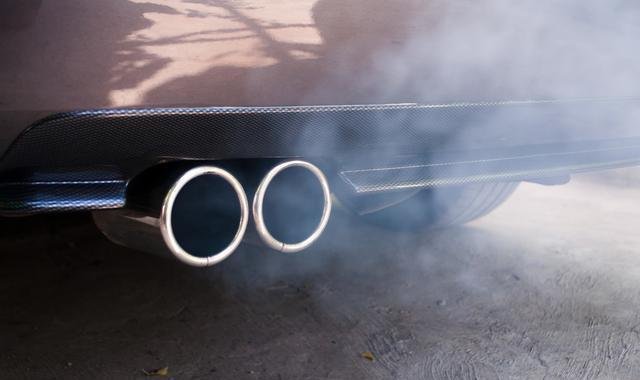
The exhaust of a diesel engine should be colorless or light gray. If the smoke color is abnormal, the engine may have a fault. White smoke during engine operation is caused by diesel vapor or water vapor in the exhaust. Observing the color of the exhaust smoke makes it possible to identify the faulty part of the diesel engine, allowing for timely troubleshooting.
To extend its service life, the engine must maintain good working conditions. At the same time, complete fuel combustion saves fuel, improves efficiency, and reduces air pollution.
Analysis of Fault Causes in Single-Cylinder, Four-Stroke Diesel Engines
Analyzing the causes of white smoke in the engine
There are many causes of white smoke, the main ones being as follows
- Low Engine Temperature – When the engine temperature is too low, some diesel fuel fails to combust completely and turns into oil vapor, which is expelled with the exhaust gases, resulting in white smoke.
- Water in the Fuel System – If water is in the fuel or combustion chamber, it gets heated by the combustion process inside the cylinder and turns into steam, which exits through the exhaust pipe as white smoke.
- Delayed Injection Timing – If the fuel injection timing is too late, the cylinder temperature drops before injection occurs, causing incomplete combustion. As a result, some diesel fuel turns into oil vapor, leading to white smoke emission.
- Poor Fuel Atomization – If the fuel injector does not atomize the fuel properly, incomplete combustion occurs. The unburned diesel mixes with the high-temperature exhaust gases from normally functioning cylinders, resulting in white smoke from the exhaust pipe.
- Low Cylinder Pressure – When cylinder pressure is too low, part of the diesel fuel fails to combust and turns into oil vapor, causing white smoke emissions from the exhaust pipe.

Engine Troubleshooting and Troubleshooting
- Large Amount of White Smoke on Startup in Winter – When starting the engine in cold weather during winter, if there is a large amount of white smoke from the exhaust pipe but it gradually disappears as the engine temperature rises and then returns to normal, it indicates that the engine temperature is too low and there is no need for further action.
- Diesel Engine Lacks Power and Emits White Smoke – If the engine is weak and emitting white smoke, place your hand near the exhaust pipe. If water droplets are present on your hand as the white smoke passes, it indicates water has entered the cylinder. Use the single-cylinder fuel cut-off method to identify the cylinder with water leakage. If cutting off fuel to the cylinder affects engine speed, the cylinder is working well. If not, the cylinder is not functioning and should be inspected for water traces on the injector nozzle. If water is found, check the cause of water ingress, determining if the cylinder has cracked or the cylinder gasket is damaged. If all cylinders exhibit the same issue with power loss and white smoke, check for water in the diesel fuel by opening the drain plugs on the fuel tank and fuel filter to see if water is present.
- White Smoke Turns to Black Smoke as Engine Temperature Rises – If the diesel engine emits white smoke and as the engine temperature reaches around 70°C, the exhaust changes from white to black smoke, suggesting poor atomization and dripping from the injector. Use the cylinder fuel cut-off method to identify the faulty injector and then calibrate the injector. If there is dripping during injection, further check whether the issue is due to low injection pressure or deformation/wear of the needle valve, and take corrective measures.
- White Smoke on Startup Turns to Black Smoke After Engine Warms Up – If the diesel engine emits white smoke upon startup but turns to black smoke as the engine temperature rises, it indicates insufficient cylinder pressure. Although this pressure is enough to start the engine, the low temperature during startup causes some diesel to evaporate into steam instead of burning. Inspect the valve sealing, valve timing, cylinder head gasket or injector seat sealing, cylinder wear, and piston ring conditions, then address the issue accordingly.
- Irregular Operation and White Smoke at High Engine Speed – If the diesel engine operates unevenly, accelerates poorly, runs hot, lacks power, and emits gray-white smoke from the exhaust pipe at high speed, it indicates delayed injection timing. Check and adjust the tightness of the connecting disc screws, key, and keyway. Gradually advance the injection timing to eliminate white smoke and restore normal engine operation. If no improvement is noted after adjustment, check if the timing adjustment screws of the injection pump’s cylinder plungers are misaligned and take corrective actions.

About Shanhedongli
Shanhedongli is an engine supplier that offers engine assembly and reorganization, already all spare parts are from the brand’s original manufacturers, and quality is guaranteed.
shanhedongli has more than ten years of industry experience, there are very many engine cases, I hope you can subscribe to learn more about engine general knowledge.

